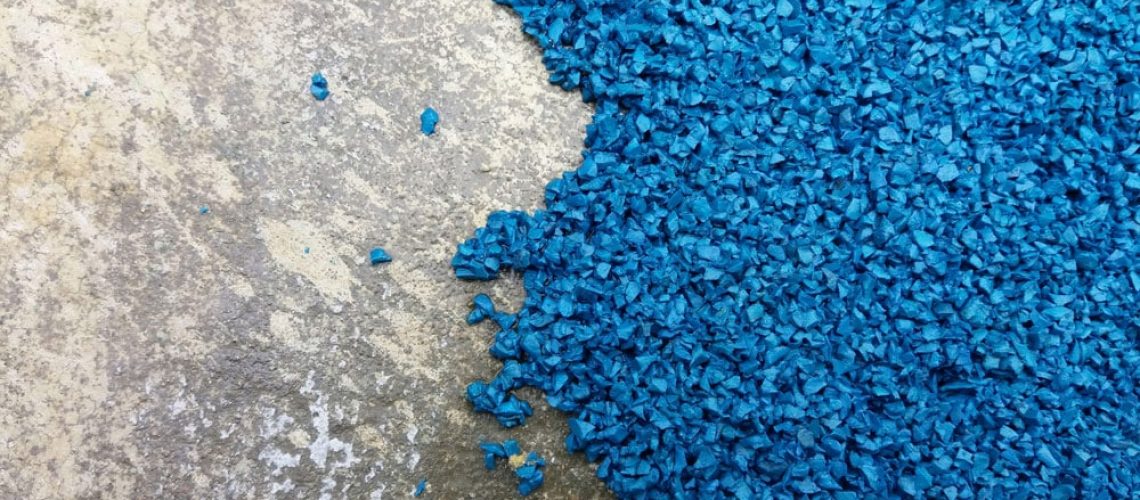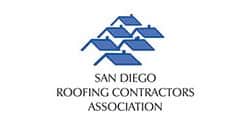When it comes to flat roofing, EPDM rubber roofing is one of the best options for commercial buildings. You may be wondering, what is EPDM roofing? Short for ethylene propylene diene monomer, this roofing system uses a single ply membrane to protect a flat roof from leaks and other damages. It’s a tried and true option that has provided durable commercial roofs for over 60 years. If you need a roof replacement and you want something that requires less maintenance than an old BUR style roof, you should consider EPDM.
Benefits of EPDM roofing
EPDM has one of the longest life expectancies of any flat roofing, lasting 50 years or more with proper care. It is durable, eco-friendly, and it can lower your climate control costs if you select the right coloring. A white EPDM membrane will reflect heat and keep your building cool during the summer, while the standard black rubber membrane will absorb heat and keep your building much warmer in the winter.
While EPDM roofing is more costly than other single ply roofing systems like a TPO roofing installation, the roof will generally last twice as long, especially in hot weather. In regard to what is TPO roofing, it’s a lightweight, leak-free roofing system that reflects 90% of the sun’s UV rays. An EPDM rubber roof is more flexible than most roofing options, and it won’t expand or contract as much with temperature changes, so roof maintenance is generally minimal. If it is damaged, there are plenty of options for patching and sealing the membrane, and a professional roofer can make quick work of it.
How to install EPDM roofing
Single ply roofing can be installed using mechanical fasteners, a ballasted system, or fully adhered with chemical adhesive. Fully adhered installations offer the best leak resistance and the longest life expectancy, but they are also more difficult. They require experience and skill in order to avoid common mistakes that can lead to roof failure.
1. Prepare the Roof Deck
The roof deck should be thoroughly clean from any oil or grime, and you should sand any sharp edges of the plywood or OSB board. Even a small amount of moisture can lead to problems with the adhesive, so it’s essential that everything is dry before you begin your EPDM installation.
If you’re installing your EPDM over an existing roof, you should cover it with clean, sanded plywood or OSB board to provide a barrier to protect the membrane. If you’re applying the EPDM directly to roof decking, you should consider adding a layer of insulation to prevent problems with water vapor. Install it according to the manufacturer’s guidelines. For better insulation, you can use chemical adhesive.
2. Add a drip edge and drip batten
Once the roof deck is ready, you’ll need to install the drip batten into the fascia around the roof to extend the decking to guide drain water into the gutter system. Next, install the drip edge, aligning the curved top with the batten. This will ensure that the water stays off the roof’s edges and prevents erosion around your foundation.
3. Install the rubber membrane
You will need enough EPDM membrane to completely cover your roof, along with a thick overhang for the exterior walls and roof edge. When the roof deck is prepared and the drip edge is installed, you’ll need to give the roofing membrane time to restore its shape. Unroll the EPDM membrane and place it over the area where it will be installed. It needs to relax in place for at least a half hour so that it won’t bend out of place once you’ve applied the bonding adhesive.
Once the membrane has relaxed, roll it back slowly, exposing about half of the roof decking, and apply the bonding adhesive using a paint roller, leaving a 6” border around the edge. You’ll need to attach the membrane while the adhesive is still wet by rolling it carefully back into place.
On hot days the adhesive will dry faster, so you may need to work with smaller areas at a time.
Once the roof membrane is in place, you can use a push broom to sweep out air bubbles and improve the bond. Continue rolling back the membrane and applying adhesive until all of the roofing material is in place.
4. Apply the finishing touches
The final edges may be small, but they take time and care to do right. You’ll need to apply adhesive to the border around the edge. Next, you’ll need to seal the corners using pressure-sensitive flashing. You’ll also need to use flashing to create watertight seals for vents and other things that penetrate the roof. Silicone sealant is used to seal all the edges to prevent moisture from entering the membrane. Finally, you can remove excess membrane by trimming it.
Contact Roofing Pros to Protect Your Building
Even the simplest roof repair jobs are best left to the professionals, and a fully adhered EPDM roofing system is particularly tricky to install correctly. A roofing contractor has the proper tools and the experience to use them safely, without causing any damage or leaving your roof vulnerable in the process.
Preman Roofing Solar is a San Diego roofing company that offers residential roofing and commercial roofing installations, including single ply membrane roofing systems. We are committed to using high quality, American made roofing materials for all of our installations and roof repair work. Contact us today for a free estimate, and learn more about how our roofing experts can help.








